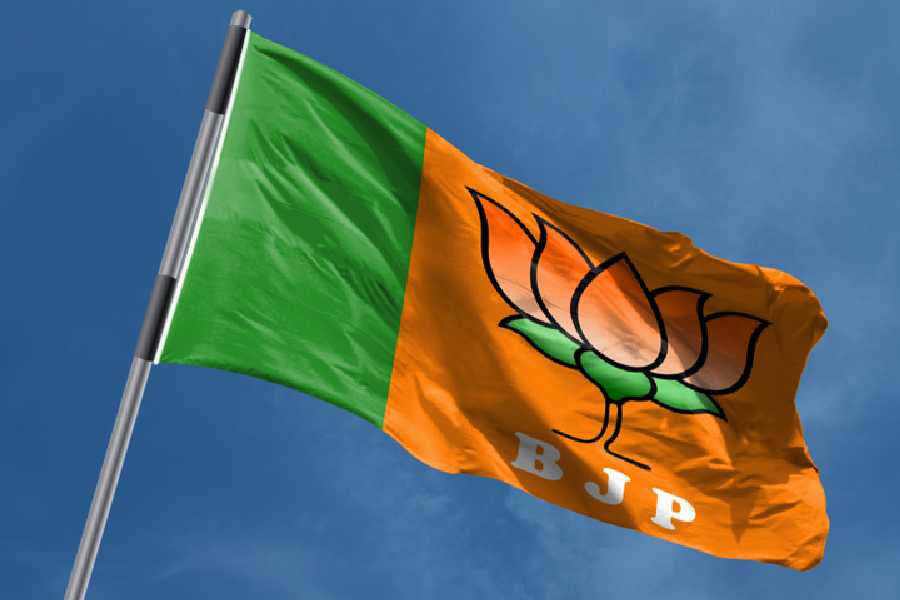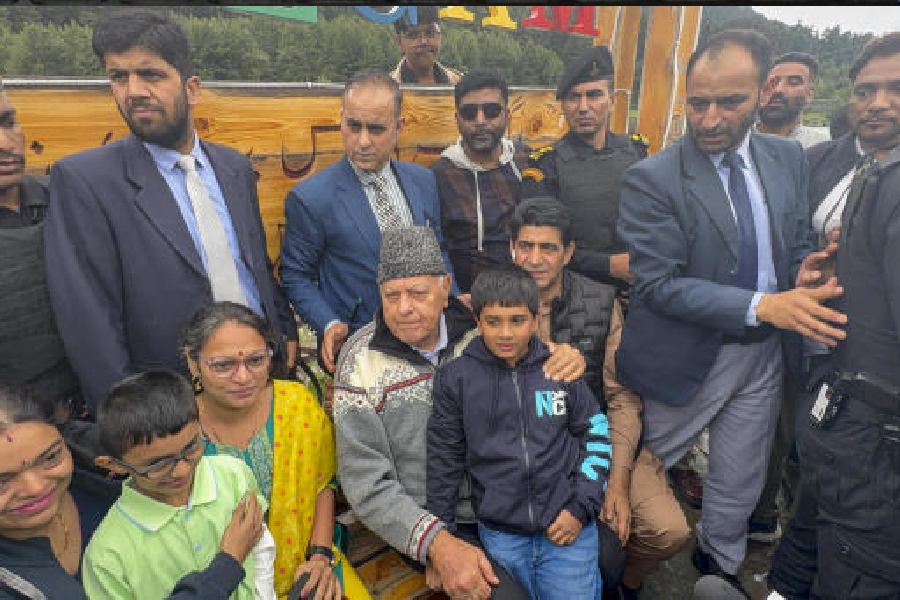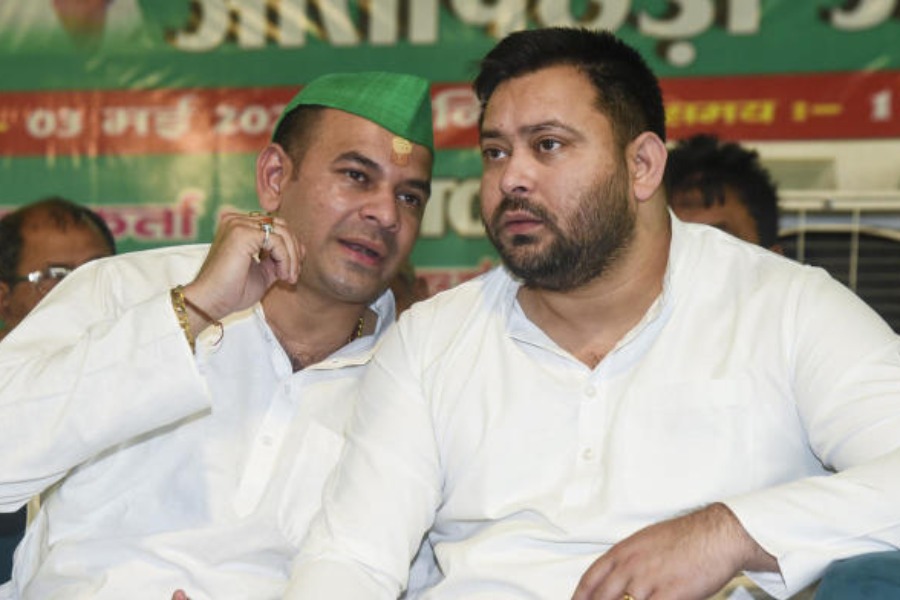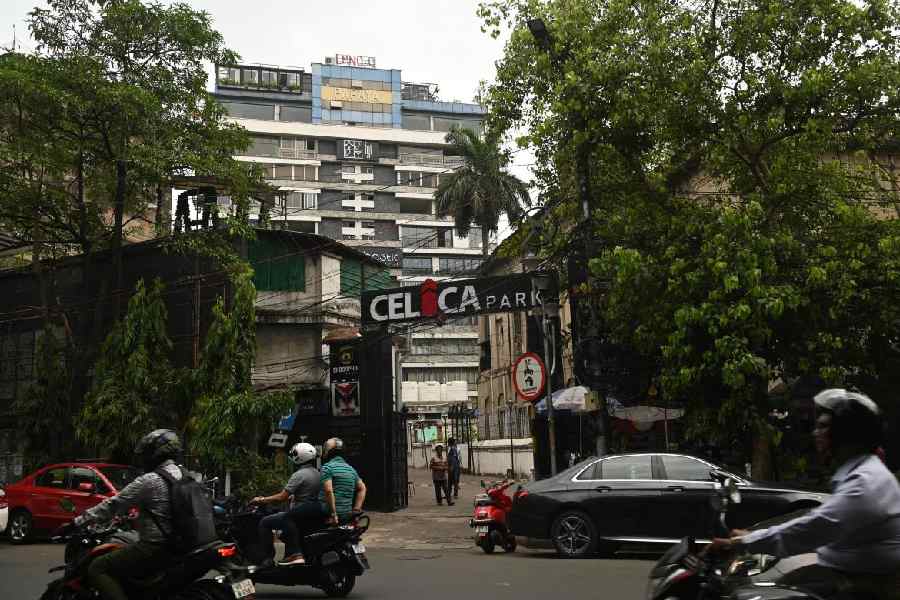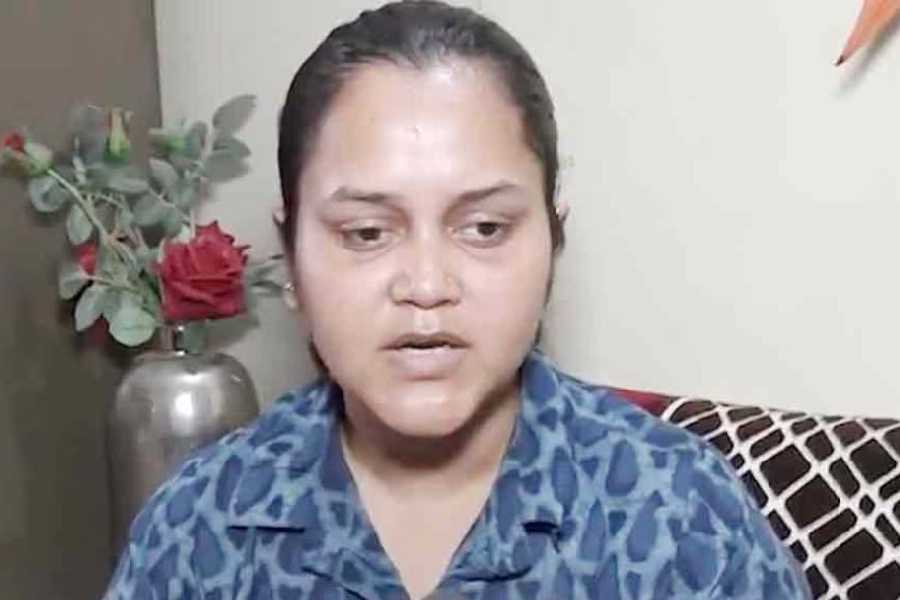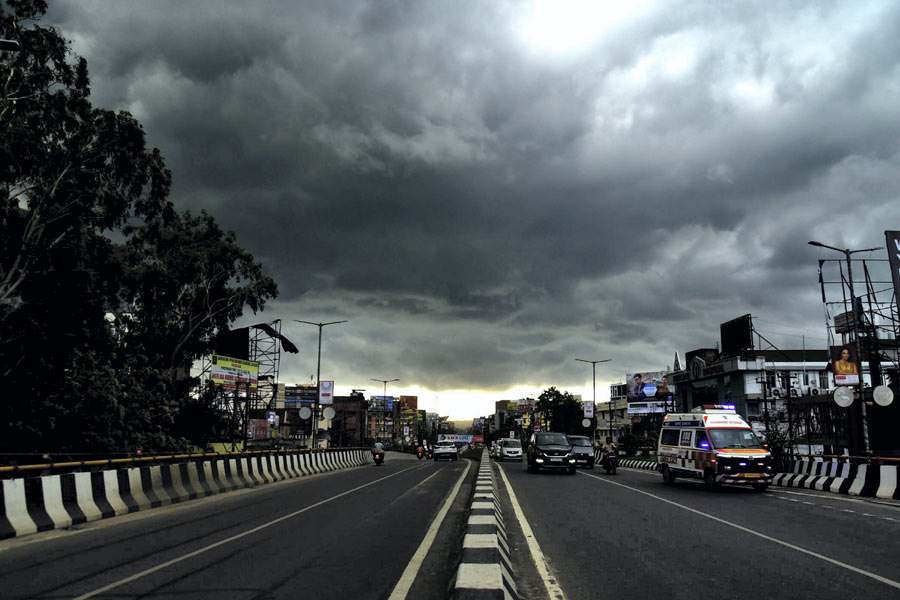 |
He was to Guru Dutt what Vittorio Storaro was to Bernardo Bertolucci, or Sven Nykvist to Ingmar Bergman. And just as you can’t imagine the Godfather series without the camerawork of Gordon Willis, it is difficult to think of the Indian director’s masterpieces without his visual collaborator and cinematographer V.K. Murthy.
At a time when contemporary remakes of classics are de rigueur in the Hindi film industry, news of Sahib, Biwi aur Gangster — based on Dutt’s 1962 film Sahib, Biwi aur Ghulam — is enough excuse (if an excuse was needed) to visit Murthy. With Dutt and scriptwriter Abrar Alvi, Murthy formed a magical trio that delivered films such as Kaagaz Ke Phool, Pyaasa, and Chaudhvin Ka Chand.
Last week marked Dutt’s 47th death anniversary. Alvi died two years ago. Silver-haired Murthy, just a month short of his 88th birthday, is still energetic. In a crisp white kurta-pyjama, he ushers us into a living room where Indian musical instruments, family photos and deities overshadow the single film poster from Pyaasa.
Murthy last shot a film in 2005. With the death of his wife a few years ago, he returned to Bangalore to look after his daughter Chhaya who is disabled. She wheels herself in and pitches in to jog her father’s memory occasionally.
But Murthy doesn’t require much prodding. He recalls events as if they occurred yesterday. Take the epic shot of a sunbeam entering a deserted studio. The classic image — the subject of many a film course — was captured when Murthy pointed out the dust mites as light streamed in through the “portholes” of a studio one evening. Dutt was shooting Kaagaz Ke Phool (1959), the first Indian film in 75mm cinemascope. Murthy pointed out the beauty of the light and dust and Dutt immediately wanted it in the film. “I don’t know how, baba,” Murthy remembers protesting. But the director was adamant. And Murthy, of course, delivered.
A high megawatt sungun hired from the Shantaram Studios didn’t capture the image. Murthy was then inspired by a passing make-up man carrying a mirror off which light reflected onto a studio wall. With two large mirrors, natural light and a cold smoke generating substance, history was created.
Murthy also improvised to take close-ups. “Guru Dutt used to take the camera so close to the artist that you couldn’t give a light because the camera shadow would come,” Murthy explains. So he got two rods, drilled holes into them, put a wooden strip in between and put cliplights with a dimmer. It worked beautifully. “Assistant cameraman Fardoon Irani remarked, ‘Kya re, beautiful re,’” he recalls, the Bombaiya lingo still lingering in his southern accent.
“When I was doing something like that, senior cameramen in those days would say: ‘We can’t think of these things. Par tum Madrasi log hai na…’ Every south Indian is a Madrasi for them,” he laughs.
The iconic shot notwithstanding, the film tanked when it opened. Dutt and Murthy were devastated. “Being the first cinemascope film some of the distributors had thrown a party. I was invited to it but didn’t go. I was hurting so much, no. It was beautifully done and my work was so good. But as far as the subject was concerned, I told Guru Dutt, even before he started…” Murthy trails off.
The cinematographer was convinced that audiences who believed all film people led a luxurious life would be disappointed with the story of a failing film director. But Dutt disagreed. “‘Nahin re, main aisa hi karoonga ’.”
According to Murthy, the film was taken off in less than a week. “But Shammi Kapoor came for the premiere. In the interval he called out, ‘Picture ka hero kidhar hai?’ Someone said Guru Dutt was in the lobby. He said ‘No, Murthy kidhar hai?’ I was outside smoking when he came and swung me up like a baby, saying, ‘Dekho, this is the hero of the picture’.”
The film was soon recognised as a classic, and Guru Dutt lived to see it happen. Murthy has his own recall of who directed the next film from the Dutt banner. “Guru Dutt was disappointed after Kaagaz Ke Phool, but he started Sahib, Biwi aur Ghulam. Dutt directed it himself but initially did not lend his name to it, naming Abrar Alvi as director. “Abrar took a couple of shots, and Guru Dutt and I directed it in two batches.”
The two began to collaborate after Murthy, then working with Famous Studios, suggested a difficult shot to Dutt, who was making his first film Baazi (1951), and ended up as his permanent cameraman. “We were tum, not aap. We were equals. I was a year older. We loved our respective jobs. Both of us were serious technicians.”
The auteur even sent him off to England to work with the foreign crew of The Guns of Navarone. Technical rules barred Murthy from working with them, so he sat around all day, bored with nothing to do. And then Gregory Peck arrived. “He saw me. ‘Please come here. Are you from India?’ Yes sir. ‘I too had been to Bombay, you know that? I have met Suraiya,’” Murthy recounts. “The first time he saw me, he talked to me. American style. Whereas, English people, even after two months they wouldn’t say hello.”
Did the news of Dutt’s death come as a shock? “I wouldn’t say it was a shock. He had tried (to commit suicide) on two or three occasions. He took sleeping tablets. Gone.”
Dutt had indicated his angst with life during a location hunt with Murthy. He had wanted to produce, direct and act — all of which he’d done. So what was left? His views alarmed Murthy. “I was the only person he could talk to frankly. But he did it (commit suicide) anyway. I used to tell him, you have tried two times, the third time you will become successful. Twice we saved him; the third time he was successful,” he says, with a short laugh.
Murthy is guarded about his Dutt’s personal secrets. Ask him about his own favourite heroines, and he is similarly reluctant. But he does admit to a soft corner for Meena Kumari. “Actually, Meena Kumari, and a couple of heroines. I worked mainly with Waheeda Rehman, though,” he says, describing her as “mostly homemade”.
But he kept his distance from heroes and heroines. “If you become very close to them they will sit on your head. Heroines, particularly,” he remarks knowingly. “Even though Meena Kumari used to like me very much, I kept a distance.”
Murthy remained unencumbered by the glamour of the industry partly because, he says, he did not mix with people, nor did any “boozing-geezing” in the evenings. “Even Guru Dutt used to say ‘Aao na…’ But I’d come back home to my wife Sandhya and my daughter. I loved my home.” Also, after pack-up Murthy liked to direct plays in Kannada. He helmed 32 plays and wrote six courtroom dramas.
After Dutt, Murthy worked with other directors but it was never quite the same. Producer-director Kamal Amrohi, with whom he did Pakeezah (“It was a super super time”) and Razia Sultan, was “a very nice man”, except that he had to be prodded to come to work on his own film.
“He never hurried me either. If I wanted to take two days to set up a shot, he would say ‘Ok, no shooting tomorrow, you do your work,’” Murthy mimics fondly. Newer directors would tell him, Murthyji, please finish the shot fast for we have the heroine’s date for just a day.
In 2008, he became the first cinematographer to be given the Dadasaheb Phalke Award. “It was unexpected because it is not usually given to technicians,” says Murthy pragmatically.
But cinema was always the world that the son of an ayurvedic practitioner in the government ayurvedic hospital in Bangalore hoped to join. Even as a young boy he was sure he did not want to follow in his father’s footsteps. He did take up the violin and scored 165 marks out of 200 in his music exam and even played professionally. So what led him to cinema?
“I wanted to be famous. The most popular person known to everybody is a film actor, isn’t that right? Even more than Jawaharlal Nehru.” But when he saw himself in the mirror, the young lad decided he was unfit to be one. “But I thought I must work in films, come what may.”
After his first attempt as a teenager to work in Bombay film studios failed, he returned to Bangalore where he finished his schooling and was later among the first batch to get a diploma in cinematography from the Sri Jayachamarajendra Polytechnic in Bangalore in 1946.
His second attempt succeeded when cinematographer-director Fali Mistry took him on as an assistant director. “On the very first day he told me: ‘I have had 23 assistant directors, you are the 24th — and you are the best.’ I blushed like a girl,” says Murthy. There was no looking back after that.
Now the shots are all memories. Murthy is in touch with some of the old crowd, including Waheeda Rehman. “I miss Bombay in every respect,” he says wistfully. But perhaps not as much as Mumbai’s cinema misses him.


